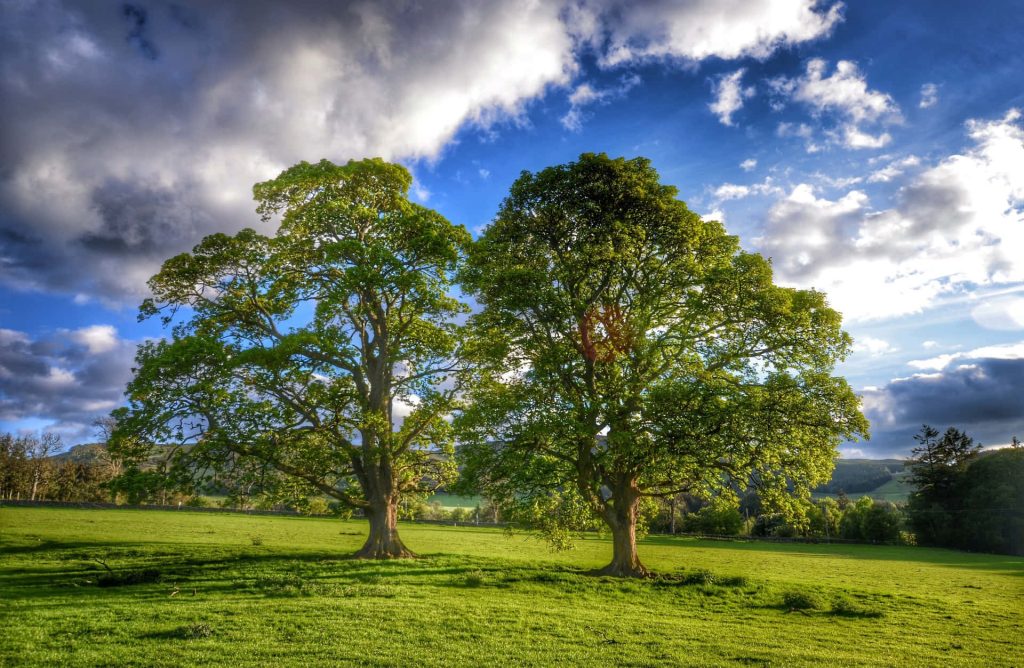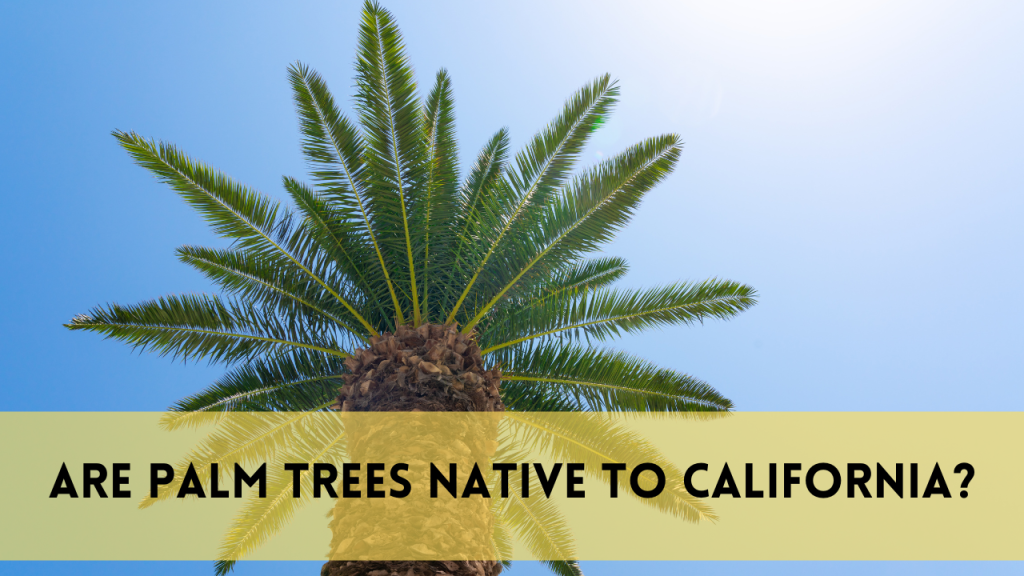Remove Grass around Trees
Grass usually drains resources from trees more quickly than other plants, and trees compete with plants for water and the soil’s finite supply of nutrients. Whether or not you should remove grass around trees depends on various factors, and making an informed decision involves considering these factors in detail
Should I remove grass around trees?
The response of different tree species to grass competition varies. While some trees are better suited to coexist with grass, others are more sensitive and may benefit from grass removal.
Tree Health and Age
Younger trees are usually prone to grass competition. To establish themselves, they need lots of space, food, and water. Their growth and development can benefit from the removal of grass. The competition from grass may have less of an impact on older, more established, and healthy trees.
Environmental Conditions
Your region’s climate, soil type, and accessibility to moisture all matter a lot. Grass removal may be particularly important in dry climates to lessen competition for water. In contrast, the effect of grass competition might be less severe in locations with plentiful rainfall or moisture.
Thinning and browning of Grass
Overcrowding, when grass plants compete for resources like sunlight, water, and nutrients, can lead to thinning grass.
Lack of water during dry periods is a leading cause of grass browning. Grasses may go dormant and turn brown to conserve water when moisture is scarce.
Weed Invasion
Neglected grass can be an open invitation for weeds to take over, reducing the aesthetic appeal of your landscape even further.
Depth of the Roots
Check the depth of your trees’ roots. Shallow-rooted trees are more vulnerable to grass competition, whereas deep, widespread root systems are better able to acquire nutrients and moisture from deeper in the soil.
Aesthetic and landscape objectives
Your landscaping preferences are important. Removing grass around trees can give your clean, neater appearance environment while also emphasizing the tree as a focal point
Lawn Maintenance
Watering and fertilizing your lawn might have an impact on grass competitiveness with trees. Excessive fertilization or irrigation of grass can aggravate competition for resources.
Mulching
Instead of removing grass, consider using mulch around the base of the tree. Mulch helps retain soil moisture, reduce weed competition, and improve soil health. It’s an effective alternative to grass removal.
Monitoring on a regular basis:
Regardless of your choice, it is critical to routinely examine the health of your trees. Look for stress indicators like as decreased growth, leaf discoloration, or canopy thinning. Consider modifying your lawn care procedures or eliminating grass as needed if you observe such indicators.
How to remove grass around trees
Gather Your Tools and Materials
- Shovel
- Mulch
- Gloves
- Wheelbarrow
- Weed barrier fabric(optional)
By using shovel
The shovel should be held with the blade facing down. Tap the shovel’s blade gently against the ground or a hard surface. This will loosen the soil and grass.
If tapping does not remove all of the grass, clean the remaining debris off the shovel blade with a hard brush or broom. Brush vigorously to loosen any grass that has become stuck.
A hose with a high-pressure nozzle is used to remove stubborn grass or dirt. To remove any leftover particles, spray water onto the shovel blade. To avoid rust, carefully dry the shovel after use.
After cleaning, inspect the shovel to ensure there is no grass or dirt left on it. Before storing anything, make sure it’s thoroughly clean and dry. After removing the grass, apply a layer of mulch around the tree’s base. Mulch helps with moisture retention, weed control, and root protection. Avoid placing the mulch against the tree trunk, since this could lead to decay.
By using cardboard or newspaper
Lay down the grass you want to kill and cover it with a thick layer of cardboard or several sheets of newspaper
moisten the newspaper to hold it.
Cover the cardboard or newspaper with mulch or compost.
This method deprives the grass of sunlight and oxygen, effectively suffocating it over time.
Mix white vinegar with water and a small amount of dish soap to help the vinegar adhere to the grass correctly. Don’t overspray the intended plant because vinegar can also kill it.
By using boiling water
Boiling water effectively kills grass. It’s a non-toxic method that avoids the use of chemical herbicides. Pour it into the grass which you want to kill. The extreme heat will scorch and kill the grass. Be cautious when handling boiling water to avoid burns or accidents. Wear gloves and eye protection, and pour the water carefully.
By using salt
Using salt to remove grass is an effective method, but it’s important to use it cautiously
Dissolve a high sodium salt (rock salt or table salt) in water about 1 cup of salt per gallon of water and spray the solution on the grass
The saltwater solution will draw moisture out of the grass, causing it to wilt and eventually die. Once the grass has died and become brown, remove the dead vegetation using a garden rake or shovel.
Advantages of removing grass around the tree
Grass and trees compete for resources such as water, nutrients, and sunlight.
Trees are more likely to thrive when there is less competition and less stress. Grass removal can result in greater root development, disease resistance, and overall health.
Mulch or ground cover applied around trees aids in soil erosion prevention.
A mulch ring around a tree might improve its appearance.
Tree trunks and roots can be damaged by grass trimmers (weed whackers) and lawnmowers. Grass removal removes this risk, lowering the possibility of mechanical harm to the tree.
Disadvantages of removing grass around trees
Grass can have a cooling effect on the environment. Its removal may result in a slightly warmer microclimate surrounding the tree, which may damage temperature-sensitive plants or animals.
Maintaining a mulch ring or ground cover necessitates regular maintenance.
Excessive mulching or piling it against the tree’s trunk might result in a “mulch volcano,” which is detrimental to the tree. It is critical to apply mulch correctly.
The mulch layer should be kept at an adequate thickness to give benefits such as moisture retention and weed control.
Related Posts:
Can removing grass around trees affect the microclimate of the area?
Yes, removing grass may lead to slightly warmer conditions around the tree due to the absence of cooling grass. Consider this when selecting plants for the tree well.
What chemicals remove grass?
Glyphosate is a postemergence translocated pesticide that kills turf as well as grassy and broadleaf weeds. Glyphosate is rapidly translocated in all actively developing plants. When your lawn is actively growing, apply applications.
What herbicide kills grass only?
There are various herbicides used for killing grass selectively while leaving other plants alone. These herbicides are often known as grass-selective herbicides or “grass killers.” “Sethoxydim” is a typical grass-selective herbicide.
Conclusion
To summarize, removing grass around trees is an advantageous landscaping method that can improve the health and attractiveness of your landscape. You give your trees a better environment for growth by lowering competition for resources like water and nutrients. Mulching around trees provides various benefits, including better tree health, reduced water usage, and weed suppressio.




